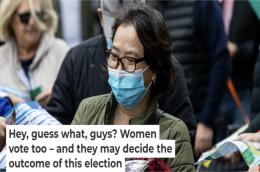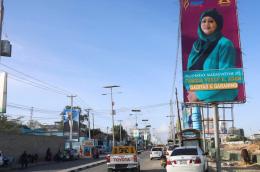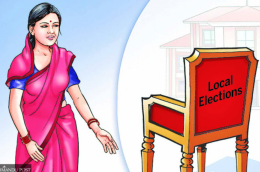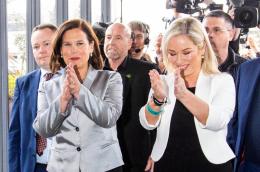Elections
Main navigation
Because “women’s issues” have been in the headlines over the last year, it may seem strange they have not been more prominent in the election campaign.
Yet it is clear gender has played a crucial role in defining the choice voters will make in the 2022 election, and female voters may well prove decisive in the election outcome on May 21.
The campaign coverage has obsessively focused on Anthony Albanese and Scott Morrison’s performance on the campaign trail, rather than on their fitness to lead the nation.
Each man has offered a different model of leadership. After his success in 2019, Morrison continues to focus on wooing male voters who might vote Labor, with his blokey campaign schtick.
Click here to read the full article published by The Conversation on 17 May 2022.
There are a few exceptions but Somali women hardly get into politics or hold top public office in what remains a deeply conservative society. Fowzia Yusuf, one of those, speaks to Al Jazeera on seeking another first.
This Sunday, Somalia is expected to hold its highly anticipated and long-delayed presidential election as 39 presidential candidates jostle for the country’s top position.
Some of the contenders include the incumbent, two former presidents, the immediate former prime minister and the president of the regional state of Puntland, joined the race.
Click here to read the full article published by Al Jazeera on 14 May 2022.
Nepal has progressive laws and quotas for women’s representation in politics, but patriarchy and gender discrimination run deep and influence the decisions of parties.
On April 28, misogyny in Nepal’s politics and society was on full display during a panel discussion at a Kathmandu college.
A young woman questioned the integrity of Keshav Sthapit, a mayoral candidate for Kathmandu Metropolitan City in the upcoming local elections. Sthapit, who has been accused of sexual harassment by two women in the past, sought to insult her.
“You are a nice lady but thutuno thik chhaina,” Sthapit said in a condescending and aggressive tone, accusing her of using inappropriate language. Wagging his index finger, the Communist Party of Nepal (Unified Marxist–Leninist) politician threatened to malign her by publishing allegations that she is a prostitute.
Click here to read the full article published by The Diplomat on 12 May 2022.
Their representation in local elections has been trimmed but they cannot speak up. Female politicians say the fight will continue though.
Out of 46,693 nominations for executive positions at the local level —mayor, deputy mayor, chairpersons and vice-chairpersons and ward chairpersons—only 4,851 are women.
While women’s nomination makes up a total of 37.84 percent, only 8.4 percent of the candidates are for executive positions, according to the Election Commission.
The remaining nominations—for female ward member and Dalit female ward member—are mandated by law.
Nepal is holding local level elections on May 13, and given the number of nominations of women, their representation will be hugely reduced compared to the 2017 elections.
Click here to read the full article published by The Kathmandu Post on 30 April 2022.
Voters in Northern Ireland have returned a record number of women to the Assembly.
Of the 90 MLAs elected to Stormont, 32 are women – an increase from 33pc in 2020 to just over 36pc.
The first Assembly formed after the Good Friday Agreement in 1998 had just 13pc female representation.
Among them were Monica McWilliams and Jane Morrice of the Women’s Coalition, Sinn Féin’s Bairbre de Brún, the DUP’s Iris Robinson, Joan Carson for the UUP and Bríd Rodgers of the SDLP, who was a minister in the first executive.
Click here to read the full article published by Independent.ie on 9 May 2022.
With more and more women running for office, races between women candidates will become the norm — not a novelty. Shared Hurdles reveals how candidates’ race, political party, and gender interact to influence voter opinion when more than one woman is on the ballot.
Research on gender dynamics in politics has seldom studied races between two women candidates. This research helps to fill that gap — and give women the tools they need to resonate with voters in races against other women. Shared Hurdles shows that in an election between two women candidates, gender biases are still prevalent, and voters hold both women to a higher standard than they hold male candidates. Shared Hurdles is a timely update on how gender shapes politics, and it provides a framework for women candidates who are campaigning against other women.
Click here to access the report.





